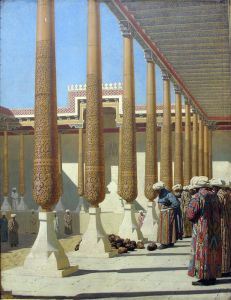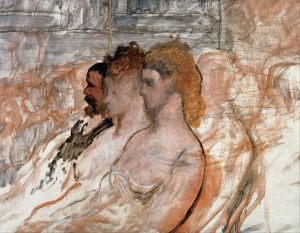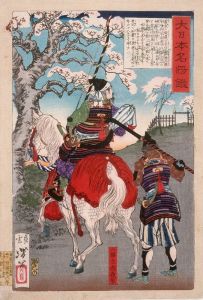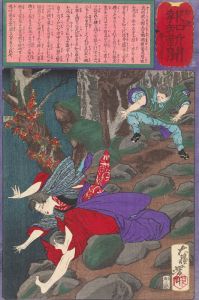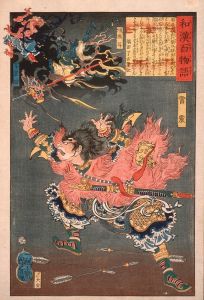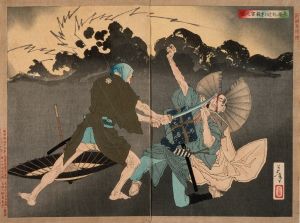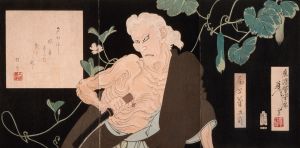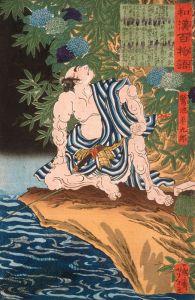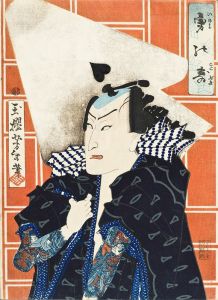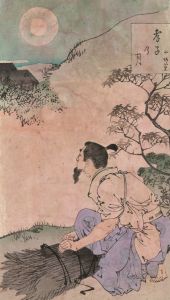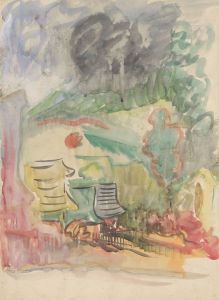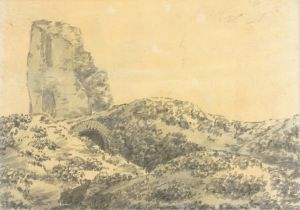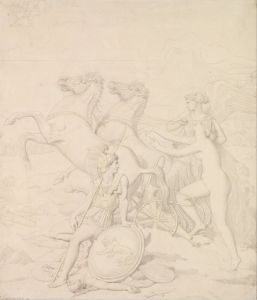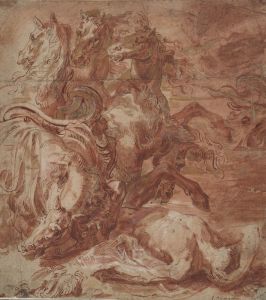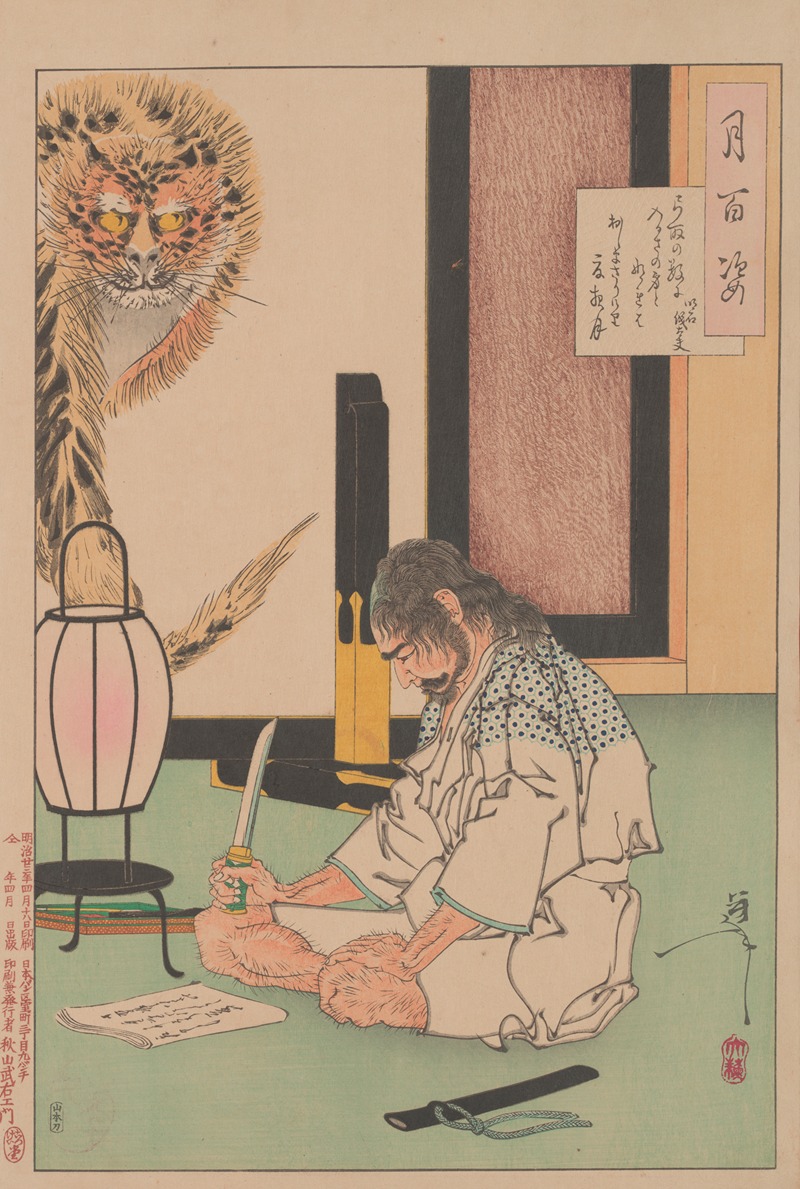
Akashi Gidayu writing his death poem before committing Seppuku
A hand-painted replica of Tsukioka Yoshitoshi’s masterpiece Akashi Gidayu writing his death poem before committing Seppuku, meticulously crafted by professional artists to capture the true essence of the original. Each piece is created with museum-quality canvas and rare mineral pigments, carefully painted by experienced artists with delicate brushstrokes and rich, layered colors to perfectly recreate the texture of the original artwork. Unlike machine-printed reproductions, this hand-painted version brings the painting to life, infused with the artist’s emotions and skill in every stroke. Whether for personal collection or home decoration, it instantly elevates the artistic atmosphere of any space.
"Akashi Gidayu Writing His Death Poem Before Committing Seppuku" is a woodblock print created by the renowned Japanese artist Tsukioka Yoshitoshi (1839–1892). Yoshitoshi is widely regarded as one of the last great masters of the ukiyo-e tradition, a genre of Japanese art that flourished from the 17th to the 19th centuries. This particular artwork is part of Yoshitoshi's celebrated series Tsuki hyakushi (One Hundred Aspects of the Moon), which was published between 1885 and 1892. The series explores themes of history, legend, and literature, often incorporating elements of human emotion and the supernatural, all connected to the motif of the moon.
The print depicts Akashi Gidayu, a samurai who lived during the Sengoku period (1467–1615), in the moments before he performs seppuku, a ritual form of suicide historically practiced by samurai to preserve honor. According to historical accounts, Akashi Gidayu was a retainer of the daimyo (feudal lord) Akechi Mitsuhide, who is infamous for betraying Oda Nobunaga in 1582. After Mitsuhide's defeat at the Battle of Yamazaki, Gidayu was captured. Facing the dishonor of capture and the failure of his lord, Gidayu chose to end his life through seppuku.
The artwork portrays Gidayu in a poignant and reflective moment as he composes his death poem, a traditional practice for samurai preparing for seppuku. The death poem was a way to express one's final thoughts, often with a focus on themes of impermanence, nature, and the fleeting nature of life. In Yoshitoshi's depiction, Gidayu is shown kneeling, brush in hand, as he writes his final words. The composition emphasizes his solemn demeanor and the gravity of the moment, while the moon in the background adds a sense of quiet introspection and timelessness.
Yoshitoshi's use of color, line, and detail in this print exemplifies his mastery of the ukiyo-e style and his ability to convey deep emotion and narrative through visual art. The inclusion of the moon, a recurring motif in the Tsuki hyakushi series, serves to heighten the emotional resonance of the scene, symbolizing both the passage of time and the universality of human experiences such as honor, loyalty, and mortality.
This print is considered one of Yoshitoshi's most evocative works, capturing not only the historical significance of Akashi Gidayu's final act but also the broader cultural and philosophical values of the samurai class. It remains a powerful example of how art can preserve and interpret historical events, offering insight into the values and traditions of a bygone era.





